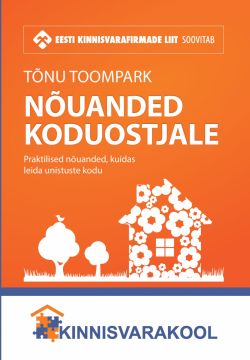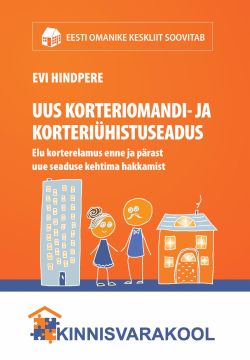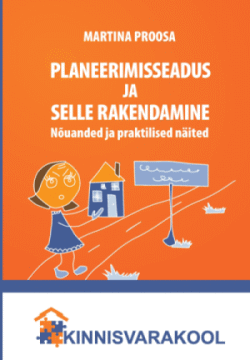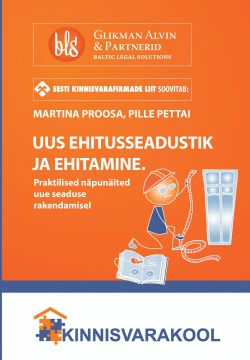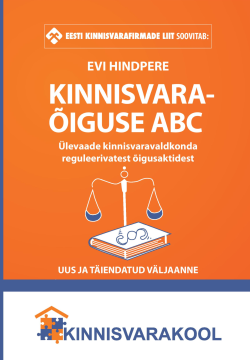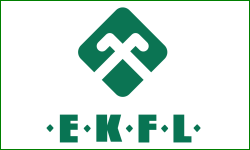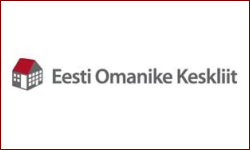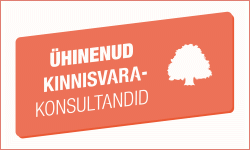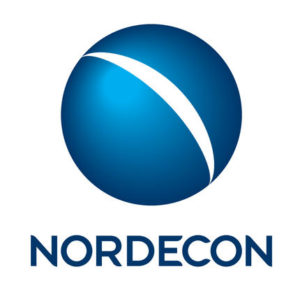 Despite the ongoing impact of the COVID-19 pandemic and turbulence in the economy, the Group’s efforts have borne fruit and the profitability in the third quarter was comparable to the same period in 2020. However, rising input prices and supply difficulties continue to put strong pressure on profit margins. The results of the first 9 months of 2021 are characterized by a slight decrease in operating volumes compared to the same period of the previous year, as well as a continuous increase of the order book.
Despite the ongoing impact of the COVID-19 pandemic and turbulence in the economy, the Group’s efforts have borne fruit and the profitability in the third quarter was comparable to the same period in 2020. However, rising input prices and supply difficulties continue to put strong pressure on profit margins. The results of the first 9 months of 2021 are characterized by a slight decrease in operating volumes compared to the same period of the previous year, as well as a continuous increase of the order book.
As of 30 September 2021, the volume of the order book amounted to 293,141 thousand euros, which is an increase of 36% compared to the same period last year. In the third quarter of 2021, new contracts were concluded in the total value of 102,326 thousand euros. Several large-scale contracts will provide a significant transition volume to construction in 2022 and 2023 as well.
The Group’s gross profit margin for 9 months decreased compared to the same period last year, amounting to 2.3% (9 months 2020: 4.4%). In the third quarter, the Group was able to significantly improve profitability, the margin reaching 3.9% (3rd quarter 2020: 4.3%). The biggest factor influencing the result of the buildings segment is the significant increase in input prices, which primarily affects the contracts concluded in 2020. In order to mitigate the risk of input prices, open budget contracts have been concluded with private customers, in which the profit margin of the main contractor is fixed. The low share of asphalt concrete production and installation due to the nature of the works segment’s work portfolio has led to a situation where fixed costs are not covered to a greater extent than usual. This significantly affects the profitability of the segment.
In the light of the general price increase, the Group has reduced administrative expenses, which have decreased by approximately 20% compared to the first 9 months of the previous year.
The Group’s sales revenue for the first 9 months of 2021 was 208,894 thousand euros, which decreased by 4% compared to the same period of the previous year. An important part of the decrease in sales revenue is in foreign markets, especially in the Swedish market, where sales revenue has decreased by 58%, Estonian sales revenue has increased by 3% compared to the same period last year.
Condensed consolidated interim statement of financial position
| €’000 | 30 September 2021 | 31 December 2020 |
| ASSETS | ||
| Current assets | ||
| Cash and cash equivalents | 5,697 | 12,576 |
| Trade and other receivables | 62,735 | 50,029 |
| Prepayments | 3,353 | 2,678 |
| Inventories | 27,405 | 22,454 |
| Total current assets | 99,190 | 87,737 |
| Non-current assets |
||
| Other investments | 76 | 26 |
| Trade and other receivables | 8,818 | 8,654 |
| Investment property | 5,639 | 5,639 |
| Property, plant and equipment | 17,703 | 18,053 |
| Intangible assets | 15,029 | 14,966 |
| Total non-current assets | 47,265 | 47,338 |
| TOTAL ASSETS | 146,455 | 135,075 |
| LIABILITIES | ||
| Current liabilities | ||
| Borrowings | 17,618 | 18,508 |
| Trade payables | 63,125 | 47,390 |
| Other payables | 7,590 | 11,814 |
| Deferred income | 12,047 | 7,738 |
| Provisions | 1,306 | 1,059 |
| Total current liabilities | 101,686 | 86,509 |
| Non-current liabilities |
||
| Borrowings | 6,583 | 7,352, |
| Trade payables | 3,354 | 2,332 |
| Provisions | 1,359 | 1,647 |
| Total non-current liabilities | 11,296 | 11,331 |
| TOTAL LIABILITIES | 112,982 | 97,840 |
| EQUITY | ||
| Share capital | 14,379 | 14,379 |
| Own (treasury) shares | (660) | (660) |
| Share premium | 635 | 635 |
| Statutory capital reserve | 2,554 | 2,554 |
| Translation reserve | 1,862 | 2,423 |
| Retained earnings | 11,855 | 14,543 |
| Total equity attributable to owners of the parent | 30,625 | 33,874 |
| Non-controlling interests | 2,848 | 3,361 |
| TOTAL EQUITY | 33,473 | 37,235 |
| TOTAL LIABILITIES AND EQUITY | 146,455 | 135,075 |
Condensed consolidated interim statement of comprehensive income
| €’000 | 9M 2021 | Q3 2021 | 9M 2020 | Q3 2020 | 2020 | ||
| Revenue | 208,894 | 90,928 | 217,664 | 80,866 | 296,082 | ||
| Cost of sales | (203,999) | (87,339) | (208,149) | (77,358) | (285,086) | ||
| Gross profit | 4,895 | 3,589 | 9,515 | 3,508, | 10,996 | ||
| Marketing and distribution expenses | (394) | (180) | (386) | (184) | (528) | ||
| Administrative expenses | (4,267) | (1,434) | (5,312) | (1,452) | (7,073) | ||
| Other operating income | 198 | 71 | 273 | 95 | 453 | ||
| Other operating expenses | (93) | (64) | (138) | (28) | (273) | ||
| Operating profit | 339 | 1,982 | 3,952 | 1,939 | 3,575 | ||
| Finance income | 877 | 340 | 270 | 21 | 2,995 | ||
| Finance costs | (942) | (277) | (2,102) | (861) | (2,678) | ||
| Net finance income (costs) | (65) | 63 | (1,832) | (840) | 317 | ||
| Share of profit of equity-accounted investees | 0 | 0 | 966 | 487 | 734 | ||
| Profit before income tax | 274 | 2,045 | 3,086 | 1,586 | 4,626 | ||
| Income tax expense | (642) | (23) | (82) | 0 | (508) | ||
| Profit (loss) for the period | (368) | 2,022 | 3,004 | 1,586 | 4,118 | ||
| Other comprehensive income (expense): Items that may be reclassified subsequently to profit or loss |
|||||||
| Exchange differences on translating foreign operations | (561) | 155 | 1,375 | 557 | 1,254 | ||
| Total other comprehensive income (expense) | (561) | 155 | 1,375 | 557 | 1,254 | ||
| TOTAL COMPREHENSIVE INCOME (EXPENSE) | (929) | 2,177 | 4,379 | 2,143 | 5,372 | ||
| Profit (loss) attributable to: | |||||||
| – Owners of the parent | (796) | 1,352 | 1,040 | 1,197 | 2,466 | ||
| – Non-controlling interests | 428 | 670 | 1,964 | 389 | 1,652 | ||
| Profit (loss) for the period | (368) | 2,022 | 3,004 | 1,586 | 4,118 | ||
| Comprehensive income (expense) attributable to: | |||||||
| – Owners of the parent | (1,357) | 1,507 | 2,415 | 1,754 | 3,720 | ||
| – Non-controlling interests | 428 | 670 | 1,964 | 389 | 1,652 | ||
| Comprehensive income (expense) for the period | (929) | 2,177 | 4,379 | 2,143 | 5,372 | ||
| Earnings per share attributable to owners of the parent: | |||||||
| Basic earnings per share (€) | (0.03) | 0.04 | 0.03 | 0.04 | 0.08 | ||
| Diluted earnings per share (€) | (0.03) | 0.04 | 0.03 | 0.04 | 0.08 | ||
Condensed consolidated interim statement of cash flows
| €’000 | 9M 2021 | 9M 2020 |
| Cash flows from operating activities | ||
| Cash receipts from customers | 243,632 | 267,488 |
| Cash paid to suppliers | (214,901) | (238,592) |
| VAT paid | (6,548) | (8,245) |
| Cash paid to and for employees | (19,128) | (20,849) |
| Income tax paid | (617) | (81) |
| Net cash from (used in) operating activities | 2,438 | (279) |
| Cash flows from investing activities | ||
| Paid on acquisition of property, plant and equipment | (134) | (184) |
| Proceeds from sale of property, plant and equipment | 246 | 246 |
| Paid on acquisition of intangible assets | (16) | (2) |
| Acquisition of a subsidiary | 0 | (2) |
| Cash received on acquisition of a subsidiary | 0 | 3,605 |
| Loans provided | (18) | (17) |
| Repayments of loans provided | 83 | 43 |
| Dividends received | 0 | 251 |
| Interest received | 7 | 8 |
| Net cash from investing activities | 168 | 3,948 |
| Cash flows from financing activities | ||
| Proceeds from loans received | 1,535 | 2,333 |
| Repayments of loans received | (3,086) | (1,949) |
| Lease payments made | (2,388) | (2,167) |
| Interest paid | (841) | (790) |
| Dividends paid | (4,706) | (472) |
| Net cash used in financing activities | (9,486) | (3,045) |
| Net cash flow | (6,880) | 624 |
| Cash and cash equivalents at beginning of period | 12,576 | 7,032 |
| Effect of movements in foreign exchange rates | 1 | (16) |
| Increase (decrease) in cash and cash equivalents | (6,880) | 624 |
| Cash and cash equivalents at end of period | 5,697 | 7,640 |
Financial review
Financial performance
Nordecon ended the first nine months of 2021 with a gross profit of €4,895 thousand (9M 2020: €9,515 thousand) and a gross margin of 2.3% (9M 2020: 4.4%). In the third quarter, profitability improved significantly: the group delivered a gross profit of €3,589 thousand (Q3 2020: €3,508 thousand) and a gross margin of 3.9% (Q3 2020: 4.3%). Nine-month profitability was strongly influenced by growth in input prices, which mainly affected contracts signed in 2020. Materials prices stabilised somewhat in the third quarter, giving grounds to expect that the negative impact of soaring input prices is going to decrease. Supply chain disruptions, on the other hand, persist and continue to put pressure on the timely completion of construction projects. Profitability decreased in both operating segments. The gross margin of the Buildings segment was 3.0% for nine months and 3.8% for the third quarter compared with 4.7% and 4.0% for the nine months and third quarter in 2020. Besides the above factors, the segment’s performance was strongly influenced by one-off expenses related to the completion of works on the Nysäter wind farm. The gross margin of the Infrastructure segment was 1.8% for nine months and 4.0% for the third quarter compared with 4.6% and 5.9% for the nine months and third quarter in 2020. A decline in asphalt concrete production and laying works has increased the share of the segment’s uncovered fixed costs.
The group’s administrative expenses for the first nine months of 2021 were €4,267 thousand. Compared to the same period in 2020, administrative expenses decreased by around 20% (9M 2020: €5,312 thousand), mainly through a decline in personnel expenses. The ratio of administrative expenses to revenue (12 months rolling) remained stable at 2.1% (9M 2020: 2.1%).
The group’s operating profit for the nine months of 2021 was €339 thousand (9M 2020: €3,952 thousand). EBITDA amounted to €2,961 thousand (9M 2020: €6,512 thousand).
The group’s finance income and costs are affected by exchange rate fluctuations in the group’s foreign markets. During the period, the Ukrainian hryvnia strengthened against the euro by around 12% while the Swedish krona/euro exchange rate did not change significantly. Translation of the loans provided to the group’s Ukrainian subsidiaries in euros into the local currency gave rise to an exchange gain of €697 thousand (9M 2020: the exchange loss on movements in the exchange rate of the Ukrainian hryvnia was €1,225 thousand and the exchange gain on movements in the exchange rate of the Swedish krona was €84 thousand).
The group incurred a net loss of €368 thousand (9M 2020: €3,004 thousand). The loss attributable to owners of the parent, Nordecon AS, was €796 thousand (9M 2020: €1,040 thousand).
Cash flows
Operating activities in the 9 months of 2021 produced a net cash inflow of €2,438 thousand (9M 2020: an outflow of €279 thousand). Operating cash flow is strongly influenced by the fact that the contracts signed with most public and private sector customers do not require them to make advance payments while the group has to make prepayments to subcontractors and suppliers. In particular, there has been rapid year-on-year growth in prepayments for materials. Cash inflow is also reduced by contractual retentions, which extend from 5 to 10% of the contract price and are released at the end of the construction period only.
Investing activities resulted in a net cash inflow of €168 thousand (9M 2020: an inflow of 3,948 thousand). The largest items were payments made for the acquisition of property, plant and equipment and intangible assets of €150 thousand (9M 2020: €186 thousand) and proceeds from the sale of property, plant and equipment of €246 thousand (9M 2020: €246 thousand). Repayments of loans provided totalled €83 thousand (9M 2020: €43 thousand). Cash flow for the comparative period was strongly influenced by the reclassification of Embach Ehitus OÜ from an associate into a subsidiary, which generated cash inflow of €3,605 thousand, and dividends received of €251 thousand.
Financing activities generated a net cash outflow of €9,486 thousand (9M 2020: an outflow of €3,045 thousand). The largest items were loan and lease payments and dividends paid. Proceeds from loans received totalled €1,535 thousand, consisting of the use of overdraft facilities and development loans (9M 2020: €2,333 thousand). Repayments of loans received totalled €3,086 thousand, consisting of regular repayments of long-term investment and development loans (9M 2020: €1,949 thousand) Lease payments totalled €2,388 thousand (9M 2020: €2,167 thousand). Dividends paid in the nine months of 2021 amounted to €4,706 thousand (9M 2020: €472 thousand).
The group’s cash and cash equivalents at 30 September 2021 totalled €5,697 thousand (30 September 2020: €7,640 thousand).
Key financial figures and ratios
| Figure/ratio | 9M 2021 | 9M 2020 | 9M 2019 | 2020 | |
| Revenue (€’000) | 208,894 | 217,664 | 172,237 | 296,082 | |
| Revenue change | (4)% | 26.4% | 2.8% | 26.5% | |
| Net profit (loss) (€’000) | (368) | 3,004 | 2,876 | 4,118 | |
| Net profit (loss) attributable to owners of the parent (€’000) | (796) | 1,040 | 2,532 | 2,466 | |
| Weighted average number of shares | 31,528,585 | 31,528,585 | 31,528,585 | 31,528,585 | |
| Earnings per share (€) | (0.03) | 0.03 | 0.08 | 0.08 | |
| Administrative expenses to revenue | 2.0% | 2.4% | 2.7% | 2.4% | |
| Administrative expenses to revenue (rolling) | 2.1% | 2.7% | 2.8% | 2.4% | |
| EBITDA (€’000) | 2,961 | 6,512 | 4,732 | 7,003 | |
| EBITDA margin | 1.4% | 3.0% | 2.7% | 2.4% | |
| Gross margin | 2.3% | 4.4% | 4.5% | 3.7% | |
| Operating margin | 0.2% | 1.8% | 1.5% | 1.2% | |
| Operating margin excluding gain on asset sales | 0.1% | 1.8% | 1.4% | 1.2% | |
| Net margin | (0.2)% | 1.4% | 1.7% | 1.4% | |
| Return on invested capital | 1.7% | 6.2% | 5.8% | 9.3% | |
| Return on equity | (1.0)% | 8.5% | 8.8% | 11.8% | |
| Equity ratio | 22.9% | 25.8% | 25.9% | 27.6% | |
| Return on assets | (0.3)% | 2.3% | 2.5% | 3.3% | |
| Gearing | 32.1% | 30.2% | 30.0% | 21.1% | |
| Current ratio | 0.98 | 1.00 | 0.93 | 1.01 | |
| 30 Sept 2021 | 30 Sept 2020 | 30 Sept 2019 | 31 Dec 2020 | ||
| Order book (€’000) | 293,141 | 215,494 | 196,493 | 215,796 | |
Performance by geographical market
The revenue contribution of foreign markets decreased significantly year-on-year, accounting for around 5% of the group’s total revenue for the first nine months of 2021.
| 9M 2021 | 9M 2020 | 9M 2019 | 2020 | |
| Estonia | 95% | 88% | 91% | 82% |
| Finland | 4% | 5% | 4% | 6% |
| Ukraine | 1% | 1% | 2% | 1% |
| Sweden | 0% | 6% | 3% | 11% |
A major factor in the decline was a steep fall in Swedish revenues, which dropped to less than 1% of the total. The amount and share of revenue generated in Finland and Ukraine remained comparable to the same period last year.
Geographical diversification of the revenue base is a consciously deployed strategy by which we mitigate the risks resulting from excessive reliance on a single market. However, conditions in some of our chosen foreign markets are also volatile and strongly affect our current results. Increasing the contribution of foreign markets is one of Nordecon’s strategic goals.
Performance by business line
Segment revenues
The group’s revenue for the first nine months of 2021 was €208,894 thousand, around 4% lower than a year earlier when revenue amounted to €217,664 thousand. The decrease is largely attributable to revenue from foreign operations (particularly Sweden), which dropped by 58%. Revenue generated in Estonia grew by 3% year on year. In segment terms, revenue from the Buildings segment decreased by 9% while revenue from the Infrastructure segment grew by 13% year on year. In a situation where the order book of the Buildings segment has grown and includes large-scale design and construction contracts, the segment’s revenue decline partly results from the fact that design activities, which precede construction operations, take a long time.
The low volumes of infrastructure construction that continue to affect the entire construction market also influenced the group’s revenue structure. In the first nine months of 2021, the Buildings and the Infrastructure segment generated revenue of €154,599 thousand and €54,029 thousand, respectively. The corresponding figures for the same period in 2020 were €169,439 thousand and €48,025 thousand.
| Revenue by operating segment | 9M 2021 | 9M 2020 | 9M 2019 | 2020 |
| Buildings | 72% | 75% | 70% | 72% |
| Infrastructure | 28% | 25% | 30% | 28% |
Subsegment revenues
In the Buildings segment, the revenues of all subsegments decreased year on year, except for the commercial buildings subsegment that posted 7% revenue growth. The revenue contributions of the commercial buildings, public buildings and apartment buildings subsegments were practically equal while the revenue generated by the industrial and warehouse facilities subsegment continued to be modest.
The largest projects under construction in the commercial buildings subsegment were a seven-floor commercial building in Rotermann City and the LEED Gold compliant Alma Tomingas office building in Ülemiste City in Tallinn and an IKEA concept store in Rae rural municipality near Tallinn.
The order book of the public buildings subsegment has grown considerably, supporting the subsegment’s annual revenue growth. During the period, the subsegment’s largest projects were an upper secondary school on the island of Saaremaa, the Medical Campus of the Tartu University Hospital, a family health centre in Tartu, an extension to the building of the Estonian Foreign Intelligence Service in Rahumäe tee in Tallinn, the main building of the Estonian Internal Security Service in Tallinn and a barracks in Paldiski.
A significant share of the group’s apartment building projects is located in Tallinn. During the period under review, the largest of them were the design and construction of the first two phases of the Kalaranna quarter and the design and construction of the Tiskreoja housing estate on the western border of the city.
The group also continues to build its own housing development projects in Tallinn and Tartu (reported in the apartment buildings subsegment). During the period, work continued on the construction of the first two apartment buildings in the Mõisavahe housing estate and the development of plots for Kivimäe Süda – a new housing estate in the Nõmme district in Tallinn. The period’s revenue from own development projects amounted to €388 thousand (9M 2020: €2,455 thousand). In carrying out our own development activities, we carefully monitor potential risks in the housing development market.
The share of revenue generated by the industrial and warehouse facilities subsegment remained stable year on year. The largest ongoing project is the construction of a factory complex for the dairy company E-Piim in Paide. However, most of the subsegment’s projects are small, with an average cost of €2 million. The largest projects of the period were a two-floor warehouse and office building in the Tähetorni Technopark and a logistics centre for the packaging supplier Pakendikeskus in Tallinn.
| Buildings segment | 9M 2021 | 9M 2020 | 9M 2019 | 2020 |
| Commercial buildings | 30% | 25% | 35% | 23% |
| Public buildings | 29% | 36% | 28% | 37% |
| Apartment buildings | 29% | 28% | 30% | 28% |
| Industrial facilities | 12% | 11% | 7% | 12% |
In the Infrastructure segment, the largest revenue contributor is the road construction and maintenance subsegment, which increased its revenue by around 21% year on year. The period’s largest ongoing projects were the construction of the Väo junction on the eastern border of Tallinn and 2+2 passing lanes on the Kärevere-Kardla section of the Tallinn-Tartu-Võru-Luhamaa road, the performance of earthworks on the Võõbu-Mäo section of the Tallinn-Tartu road, and the reconstruction and rehabilitation of national roads in Hiiu county. We also continued to deliver road maintenance services in Järva and Hiiu counties and the Kose maintenance area in Harju county.
The group has won several contracts for the construction of small harbours. During the period, work was done on the construction of Salmistu harbour and Vasknarva boat harbour and the expansion of berths in Roomassaare harbour on the island of Saaremaa, which accounted for a major share of the specialist engineering revenue.
| Infrastructure segment | 9M 2021 | 9M 2020 | 9M 2019 | 2020 |
| Road construction | 85% | 77% | 81% | 74% |
| Other engineering | 5% | 18% | 16% | 21% |
| Environmental engineering | 5% | 1% | 3% | 1% |
| Specialist engineering | 5% | 4% | 0% | 4% |
Order book
The group’s order book (backlog of contracts signed but not yet performed) stood at €293,141 thousand at 30 September 2021, a 36% increase year on year. In the third quarter, we signed new contracts of €102,326 thousand (Q3 2020: €87,751 thousand).
| 30 Sept 2021 | 30 Sept 2020 | 30 Sept 2019 | 31 Dec 2020 | |
| Order book (€’000) | 293,141 | 215,494 | 196,493 | 215,796 |
The proportions of the two main operating segments in the group’s order book have not changed substantially: the Buildings segment still dominates with 87% while the share of the Infrastructure segment is 13% (30 September 2020: 79% and 21%, respectively). Compared with 30 September 2020, the order book of the Buildings segment has grown by 51% and the order book of the Infrastructure segment had decreased by 18%.
A major share of the value of new contracts signed in the third quarter was made up of contracts secured by the Buildings segment, the largest of which were:
- the construction of Kastani Kodud, a housing estate in Jõelähtme rural municipality near Tallinn with a cost of around €5,500 thousand;
- the design and construction of Vektor, a commercial and residential complex at Pärnu mnt 137 in Tallinn with a cost of around €38,000 thousand;
- the construction of Roseni Maja, an office building at Ahtri 4 in Tallin with a cost of around €17,000 thousand;
- the design and renovation of the sports centre of the Ülenurme Upper Secondary School near Tartu with a cost of around €5,600 thousand;
- the design and construction of warehouses and related outdoor infrastructure for the Centre for Defence Investment in Harju county with a cost of around €9,800 thousand.
A major share of the order book of the Buildings segment is also made up of contracts secured in the first half of 2021 and earlier periods, the largest of them including the construction of the main building of the Estonian Foreign Intelligence Service in Tallinn, an IKEA concept store in Rae rural municipality near Tallinn, a factory complex for E‑Piim in Paide, phase III of the Maarjamõisa Medical Campus of the Tartu University Hospital and the LEED Gold compliant Alma Tomingas office building in Ülemiste City in Tallinn.
In the Infrastructure segment, the order book of the road construction and maintenance subsegment is still the largest, accounting for nearly 90% of the segment’s order book. In the third quarter, one large contract was signed:
- the construction of access roads for the premises of the IKEA concept store and a new Kurna-Tuhala circular intersection in Rae rural municipality with a cost of around €3,500 thousand.
The order book also includes some large-scale contracts awarded to the group in the first half of 2021: the construction of 2+2 passing lanes on the Kärevere-Kardla section of the Tallinn-Tartu-Võru-Luhamaa road, the construction of a wind farm in the Targale rural municipality in Latvia, the expansion of berths in Roomassaare harbour on the island of Saaremaa and the design and construction of the outdoor space around Terminal D in Old City Harbour in Tallinn.
Based on the size of the group’s order book, including the share of work to be performed in 2022 and 2023, and fierce competition in the general contracting market, management expects that in 2021 the group’s revenue will remain on the same level as in 2020. The current situation, along with the rise in input prices and supply-chain disruptions which mainly affect contracts secured in 2020, have put profit margins under strong pressure. In an environment of stiff competition, we have avoided taking unjustified risks whose realisation in the contract performance phase would have an adverse impact on the group’s results. To mitigate the input price risk, we have been signing cost-plus contracts with private sector customers (these are contracts with an open book arrangement under which we can invoice the customer based on the actual costs incurred plus the agreed margin). Our focus remains on cost control as well as pre-construction and design activities, where we can harness our professional competitive advantages.
People
Employees and personnel expenses
The group’s average number of employees in the first nine months of 2021 was 690, including 432 engineers and technical personnel (ETP). Headcount decreased by around 2% year on year.
Average number of employees at group entities (including the parent and the subsidiaries):
| 9M 2021 | 9M 2020 | 9M 2019 | 2020 | |
| ETP | 432 | 422 | 413 | 450 |
| Workers | 258 | 261 | 276 | 258 |
| Total average | 690 | 703 | 689 | 708 |
The group’s personnel expenses for the nine months of 2021, including all taxes, totalled €18,325 thousand compared with €19,476 thousand for the same period last year. Personnel expenses decreased by around 6% year on year, mainly through a decrease in the number of employees, a reduction of salaries carried out in the middle of 2020 and a decline in the share of performance bonuses.
The service fees of the members of the council of Nordecon AS for the nine months of 2021 amounted to €112 thousand and associated social security charges totalled €37 thousand (9M 2020: €135 thousand and €45 thousand, respectively).
The service fees of the members of the board of Nordecon AS amounted to €276 thousand and associated social security charges totalled €91 thousand (9M 2020: €357 thousand and €118 thousand, respectively).
Labour productivity and labour cost efficiency
We measure the efficiency of our operating activities using the following productivity and efficiency indicators, which are based on the number of employees and personnel expenses incurred:
| 9M 2021 | 9M 2020 | 9M 2019 | 2020 | |
| Nominal labour productivity (rolling), (€ ‘000) | 416.5 | 400.4 | 335.0 | 422.9 |
| Change against the comparative period, % | 4.0% | 19.5% | 5.1% | 24.2% |
| Nominal labour cost efficiency (rolling), (€) | 11.1 | 10.3 | 9.5 | 10.9 |
| Change against the comparative period, % | 6.9% | 8.4% | (0.6)% | 18.0% |



